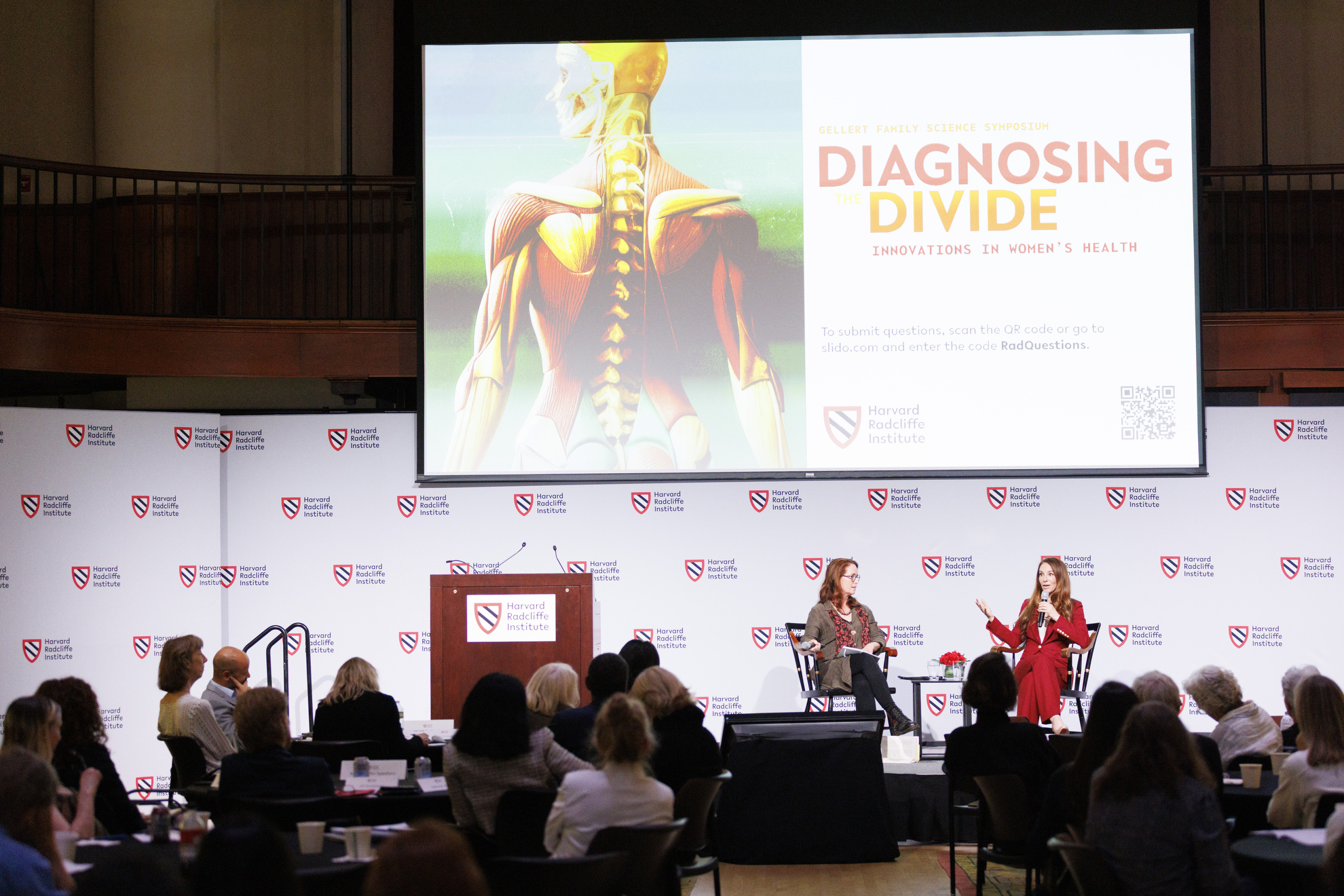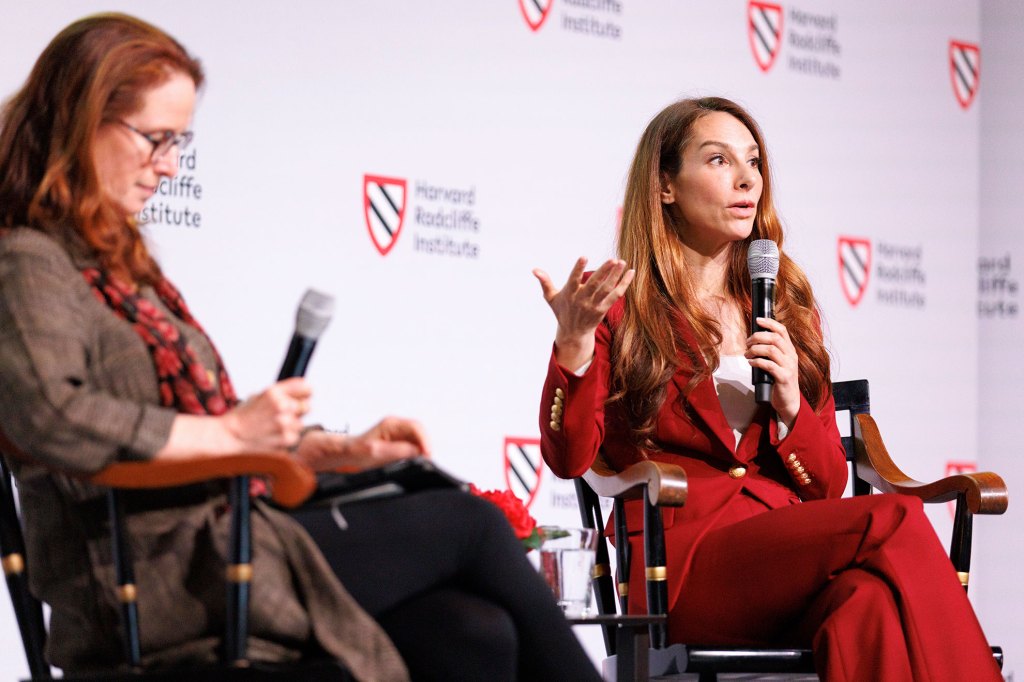How sexism in medicine continues to endanger women’s health
How sexism in medicine continues to endanger women’s health

Radcliffe symposium explores persistent bias in care today, from marginalizing heart disease symptoms to over-diagnosing anxiety
It is past time for women’s health to move beyond “boobs and tubes” — as one expert termed the field’s reproductive focus — to address the disparities and prejudice that have hindered medical providers from effectively treating more than half of the population.
That’s according to experts who gathered for a symposium held recently at the Radcliffe Institute for Advanced Study examining persistent gaps between men’s and women’s healthcare.
The event’s keynote speaker was Elizabeth Comen, a breast cancer specialist and author of the 2024 book “All in Her Head: The Truth and Lies Early Medicine Taught Us about Women’s Bodies and Why It Matters Today.” She pointed out that women have twice the risk of Alzheimer’s disease as men, and that heart attack symptoms common among women such as jaw pain and indigestion are described medically as “atypical.”
“There’s so much focus on our reproductive health but there are so many other aspects to women’s health, like atypical heart disease,” said Comen, associate professor of health and co-director of the Women’s Health Collective at NYU Langone Health. “But when I was in Medical School all I learned about was that women’s chest pain was ‘atypical’ even though we’re greater than 50 percent of the population and heart disease is the No. 1 killer of women.”
Comen, who graduated from Harvard Medical School in 2004 and Harvard College in 2000, reviewed the history of how the medical system has discounted women’s health concerns. It partly stems from the fact that historically doctors were male and viewed what was normal and abnormal through the lens of the male body. Women were viewed as emotional to the extent that female “hysteria” was in the Diagnostic and Statistical Manual of Mental Disorders until 1980, Comen said. Prevailing attitudes focused on control, promoted shame, and spotlighted women’s sexuality out of proportion to their actual healthcare needs.
Women were viewed as emotional to the extent that female “hysteria” was in the Diagnostic and Statistical Manual of Mental Disorders until 1980.
Elizabeth Comen

“The question is, how does this show up in our healthcare system today? Because we’re so evolved. But are we?” said Comen, who was interviewed by Janet Rich-Edwards, director of life course epidemiology at Brigham and Women’s Hospital and associate professor at Harvard Medical School and the Harvard T.H. Chan school of Public Health.
The legacy of those attitudes endures today, Comen said, in examining rooms where physicians speaking with male cancer patients are twice as likely to discuss potential sexual dysfunction than they are with women in the same circumstances, and in plastic surgery suites where, anecdotally, male doctors routinely suggest larger breast implants, and in hospitals where anxiety is over-diagnosed in women, dismissing valid health concerns.
She cited a case of a 34-year-old metastatic breast cancer patient whose disease had spread throughout her body extensively enough that Comen thought she didn’t have long to live. The woman, who had been orphaned, had no family support, and had lived through significant trauma, received medication that dramatically reduced the cancer. A few years later when the pandemic hit, the woman got COVID and was admitted with stuttered speech, tremors, and other stroke-like symptoms, but was dismissed as being anxious. Comen insisted on a neurology consult.
“I was thinking, I’ve met this woman when she was the most anxious she’s ever been in her life. Something is really wrong,” Comen said. “In the next room, I had a woman who also had COVID, no history of anxiety, and was eating her hand to her bone. There was something neurological going on in these women’s brains. I didn’t know what it was. There are many stories of this, when you think about endometriosis and the things that women have gone through and been told it’s all in their heads, when we really just didn’t invest in figuring out what’s going on.”
The picture of women’s health isn’t all bad, speakers said. The factors that have buoyed health in the general population — improved sanitation, vaccines, antibiotics — have not passed women by. In fact, women globally have longer life expectancies than men. Deborah Kado, professor of medicine, chief of geriatric research at Stanford University School of Medicine, and co-director of the Stanford Center on Longevity, said a girl born today can expect to live to 100, decades longer than expectations a century ago. Even that apparent good news, though has a dark lining: Women can expect to spend 12 to 15 years at the end of their lives in poor health, significantly longer than men.
Colin Hill, co-founder and chief executive officer of Aitia, which is leveraging artificial intelligence to discover new therapeutics, said things are about to change for the better. Medical science understands disease at a fundamental level — the interplay of genes and proteins — in a woefully small number of conditions, just 5 percent. The powerful artificial intelligence tools being developed and deployed today have the potential to change the medical landscape, leading to deeper understandings of the other 95 percent.
“We’re now on the precipice of real change across a number of diseases, especially those diseases that particularly affect women,” Hill said, “because we now have the chance to start to reverse-engineer the actual complex system of interacting genes and proteins that drive clinical outcomes.”
Latest Harvard
- When your English teacher writes a book on Taylor SwiftProfessor Stephanie Burt examines star’s influence, work ethic, why her music matters
- Researchers report ‘astounding’ obesity surge in U.S.Prevalence rises to 70 percent under definition that includes measures other than just BMI
- Putin doesn’t care what we thinkJournalists Baker and Glasser explore how Russian leader has interpreted, defied ambitions of U.S. leaders
- Want Americans to love EVs? Fix this.U.S. consumers aren’t thinking about daily needs when buying a car, says former GM chief economist
- ‘Dry January’ helped drive drinking rates to 96-year lowHealth experts say rise of sober-curious movement, shifts in tech, meds likely made difference in wake of pandemic excess
- Time for mandatory retirement ages for lawmakers, judges, presidents?Americans seem to mostly say yes; legal, medical scholars point to complexities of setting limits






